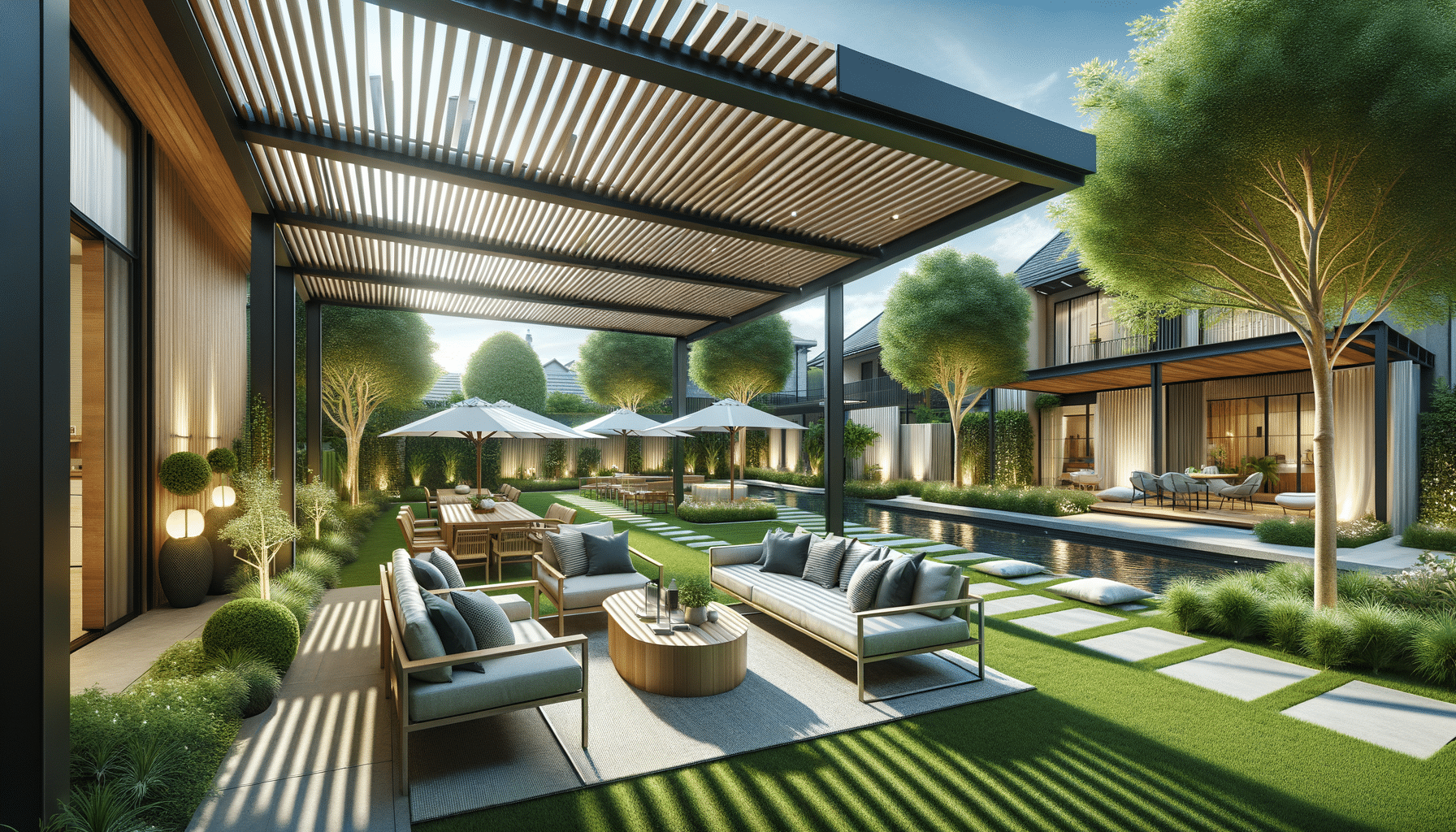
Transform Your Outdoor Spaces with Awnings and Overhangs
Understanding the Benefits of Awnings and Overhangs
Awnings and overhangs serve as functional and aesthetic additions to outdoor spaces. By providing shade and protection from the elements, they extend the usability of patios, decks, and other outdoor areas. Awnings can reduce heat gain by up to 65% on south-facing windows and 77% on west-facing windows, significantly lowering cooling costs. Overhangs offer similar benefits, protecting windows and doorways from rain and sun exposure.
These structures come in a variety of materials, including fabric, metal, and polycarbonate, each offering unique benefits. Fabric awnings, for instance, are versatile and available in numerous colors and patterns, allowing homeowners to customize their outdoor aesthetics. Metal awnings, on the other hand, are durable and require minimal maintenance, making them a long-lasting option.
In addition to energy savings and protection, awnings and overhangs enhance curb appeal. They add character and charm to buildings, often increasing property value. Whether you choose a retractable awning for flexibility or a fixed overhang for permanence, these installations are a wise investment for any homeowner looking to improve their outdoor space.
Types of Awnings and Overhangs: A Comparative Overview
The market offers a wide array of awning and overhang types, each suited to different needs and preferences. Retractable awnings are particularly popular for their flexibility; they can be extended or retracted based on weather conditions, maximizing comfort and convenience. Fixed awnings, while less flexible, provide consistent protection and are often more robust.
Material choices also play a crucial role in the functionality and aesthetics of awnings. Fabric awnings, made from materials like acrylic or polyester, are lightweight and offer a range of design options. Metal awnings, usually made from aluminum or steel, are known for their strength and durability. Polycarbonate awnings offer a modern look with their transparent panels, allowing light to filter through while blocking harmful UV rays.
When choosing an awning or overhang, consider factors such as climate, building style, and budget. For instance, in areas with heavy rainfall, a metal or polycarbonate option might be more suitable due to their water resistance. Meanwhile, fabric awnings are ideal for regions with intense sunlight, providing excellent shade and cooling benefits.
Installation Considerations for Awnings and Overhangs
Installing awnings and overhangs requires careful planning and consideration. First, assess the structural integrity of the installation site. Ensure that walls or supporting structures can bear the weight of the awning, especially for larger or heavier models. Professional installation is often recommended to ensure safety and longevity.
The orientation and size of the awning or overhang are also crucial. For optimal sun protection, consider the direction your outdoor space faces. South and west-facing areas benefit most from awnings due to the intensity of sunlight. The size should be proportionate to the area it covers, providing ample shade without overwhelming the space.
Permits and regulations may also apply, depending on local building codes. It’s essential to check with local authorities or homeowner associations before installation. This ensures compliance and prevents potential legal issues. By considering these factors, you can ensure a smooth installation process and enjoy the benefits of your new outdoor feature.
Maintenance Tips for Longevity and Performance
Regular maintenance is key to extending the lifespan of awnings and overhangs. Fabric awnings require periodic cleaning to prevent mold and mildew buildup. Use a mild detergent and water to clean the fabric, and allow it to dry completely before retracting. Metal and polycarbonate awnings are easier to maintain, often requiring only occasional washing to remove dirt and debris.
Inspect your awnings regularly for signs of wear and tear. Look for rust on metal components, tears in fabric, or cracks in polycarbonate panels. Addressing these issues early can prevent more significant problems and costly repairs. Lubricate moving parts, such as hinges and joints, to ensure smooth operation, especially for retractable models.
Seasonal care is also important. In regions with harsh winters, retract fabric awnings to protect them from snow and ice. For fixed awnings, consider installing a protective cover or using a de-icing solution to prevent damage. By following these maintenance tips, you can ensure your awnings and overhangs remain in top condition for years to come.
Creative Design Ideas for Awnings and Overhangs
When it comes to design, awnings and overhangs offer endless possibilities. Consider incorporating vibrant colors or bold patterns to make a statement and enhance your home’s exterior. Striped or floral patterns can add a touch of whimsy, while solid colors offer a classic, timeless look.
For a modern aesthetic, opt for sleek metal or transparent polycarbonate designs. These materials complement contemporary architecture and provide a minimalist appeal. You can also experiment with shapes, such as curved or angular awnings, to create visual interest and break the monotony of straight lines.
Lighting is another creative element to consider. Integrate LED strips or fairy lights under the awning for a cozy, inviting ambiance during evening gatherings. This not only enhances the aesthetic but also adds functionality by illuminating the space.
By exploring these creative design ideas, you can transform your outdoor space into a stylish and functional area that reflects your personal taste and enhances your home’s overall appeal.

